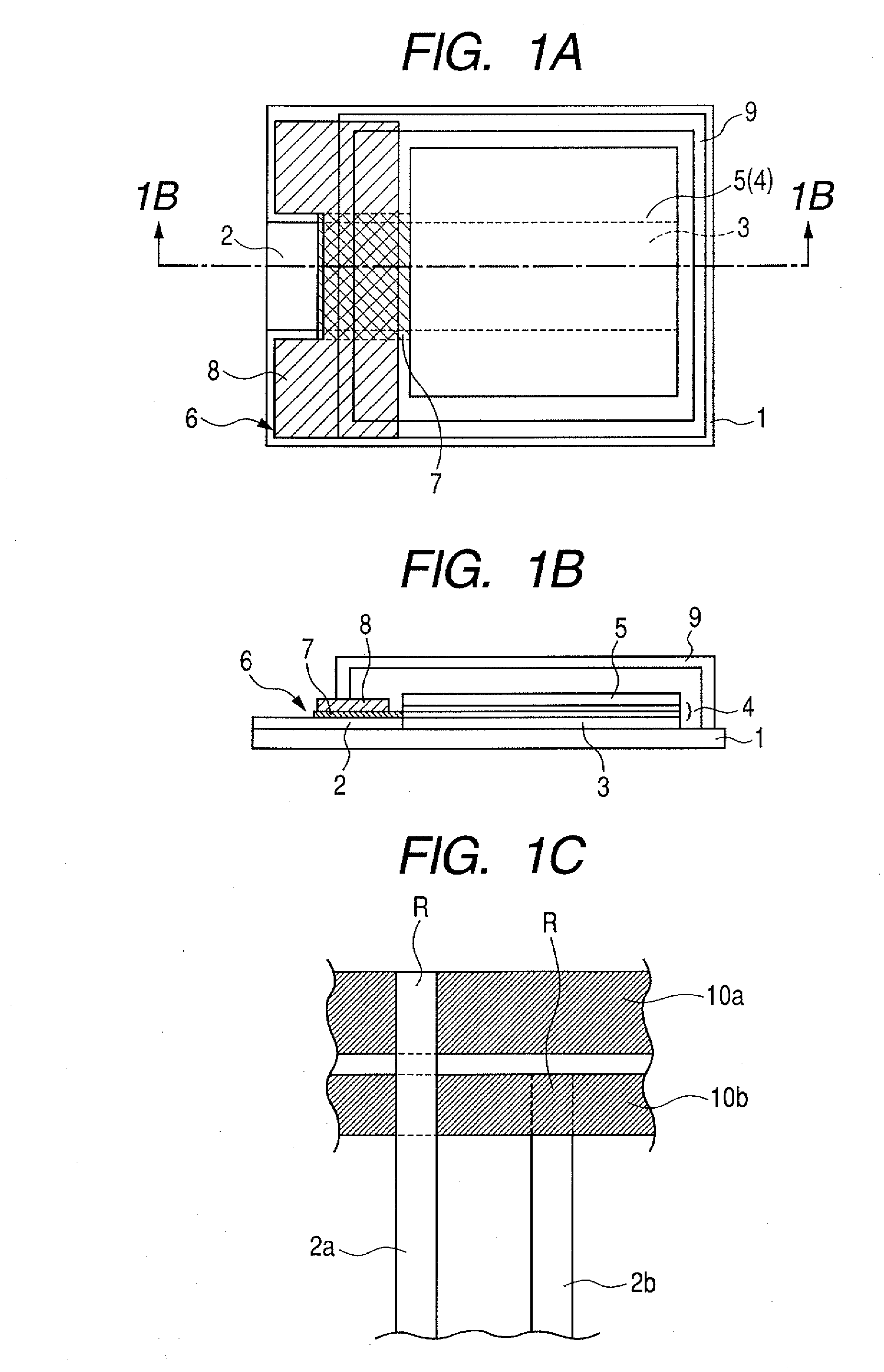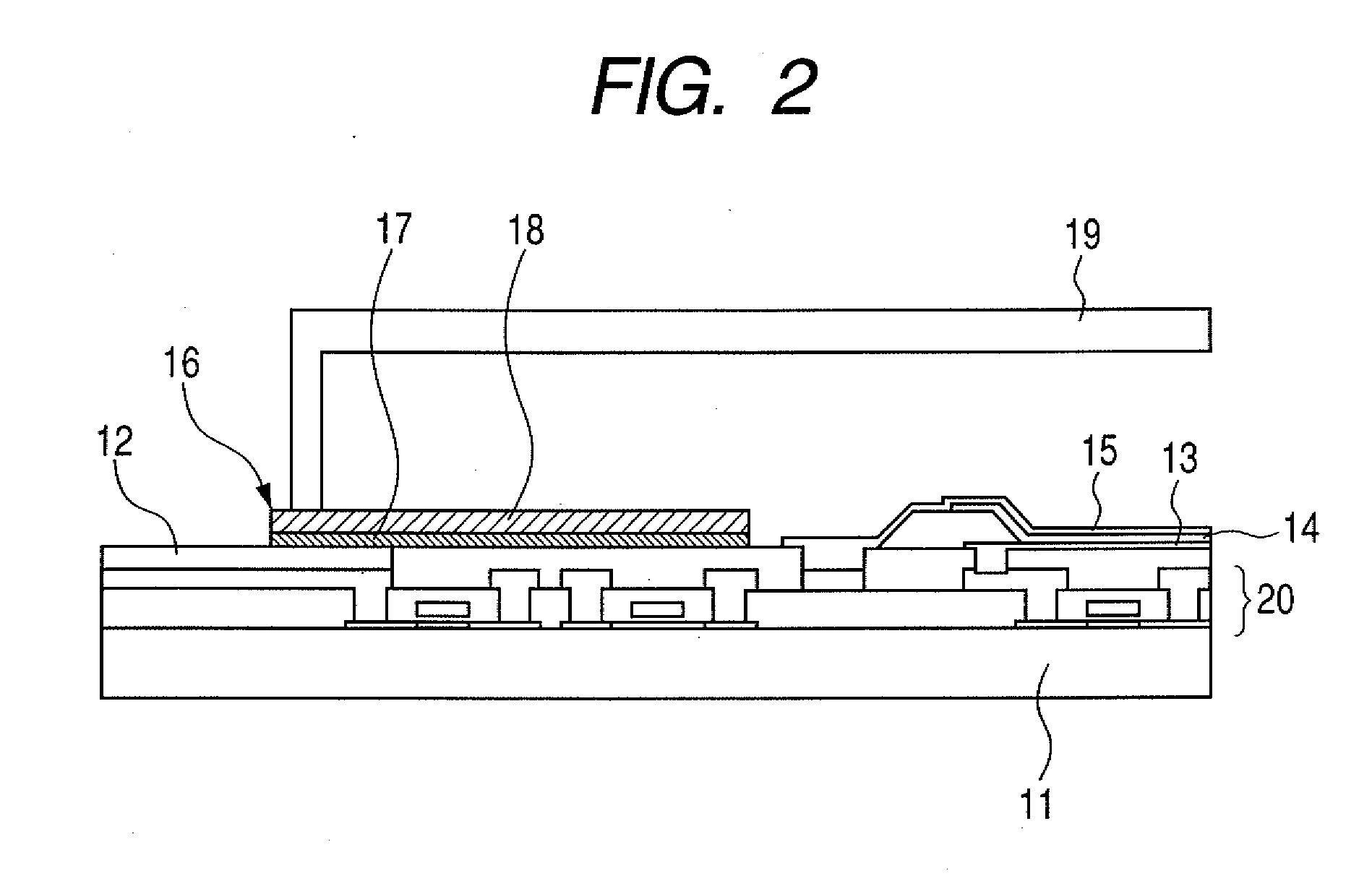Organic electroluminescence device panel
a technology of electroluminescence device and panel, which is applied in the direction of discharge tube luminescnet screen, discharge tube/lamp details, electric discharge lamps, etc., can solve the problems of shortening the lifetime of pixels, deteriorating image quality of organic el device, and reducing light emission efficiency
- Summary
- Abstract
- Description
- Claims
- Application Information
AI Technical Summary
Benefits of technology
Problems solved by technology
Method used
Image
Examples
example 1
[0029]An organic EL device panel according to an example of the present invention will be described in accordance with manufacturing steps. It should be noted that the organic EL device panel according to the present invention is not limited to that in the following embodiment and may be variously modified without departing from the gist of the present invention.
[0030]The organic EL device panel illustrated in FIG. 2 is an active drive type organic EL device panel. FIG. 2 is a partially enlarged sectional view of the organic EL device panel. In FIG. 2, the organic EL device panel includes a glass substrate 11 on which a TFT circuit 20 is formed, a lead-out wiring 12, a first electrode 13, an organic light emitting layer 14, an ITO film (second electrode) 15, a heat dissipation member 16, an insulating layer 17, a metal film 18, and a sealing glass 19. A configuration of a contact resistance portion between the lead-out wiring 12 and the power source wiring is similar to that illustr...
example 2
[0051]Another example of the organic EL device panel according to the present invention will be described in accordance with the manufacturing steps. The organic EL device panel illustrated in FIGS. 3A and 3B is a passive drive type organic EL device panel. FIG. 3A is a plan view schematically illustrating the organic EL device panel. FIG. 3B is a partial sectional view taken along the line 3B-3B of FIG. 3A. In FIGS. 3A and 3B, the organic EL device panel includes a grass substrate 21, a lead-out wiring 22, a first electrode 23, an organic light emitting layer 24, an ITO film (second electrode) 25, a heat dissipation member 26, an insulating layer 27, a metal film 28, a sealing glass 29, and a metal piece 30. It should be noted that the manufacturing steps of the organic EL device panel according to this example is similar to those of Example 1 except that a shape and film thickness of a mask are slightly different through steps of formation of the lead-out wiring 22 to formation of...
PUM
 Login to View More
Login to View More Abstract
Description
Claims
Application Information
 Login to View More
Login to View More - R&D
- Intellectual Property
- Life Sciences
- Materials
- Tech Scout
- Unparalleled Data Quality
- Higher Quality Content
- 60% Fewer Hallucinations
Browse by: Latest US Patents, China's latest patents, Technical Efficacy Thesaurus, Application Domain, Technology Topic, Popular Technical Reports.
© 2025 PatSnap. All rights reserved.Legal|Privacy policy|Modern Slavery Act Transparency Statement|Sitemap|About US| Contact US: help@patsnap.com



